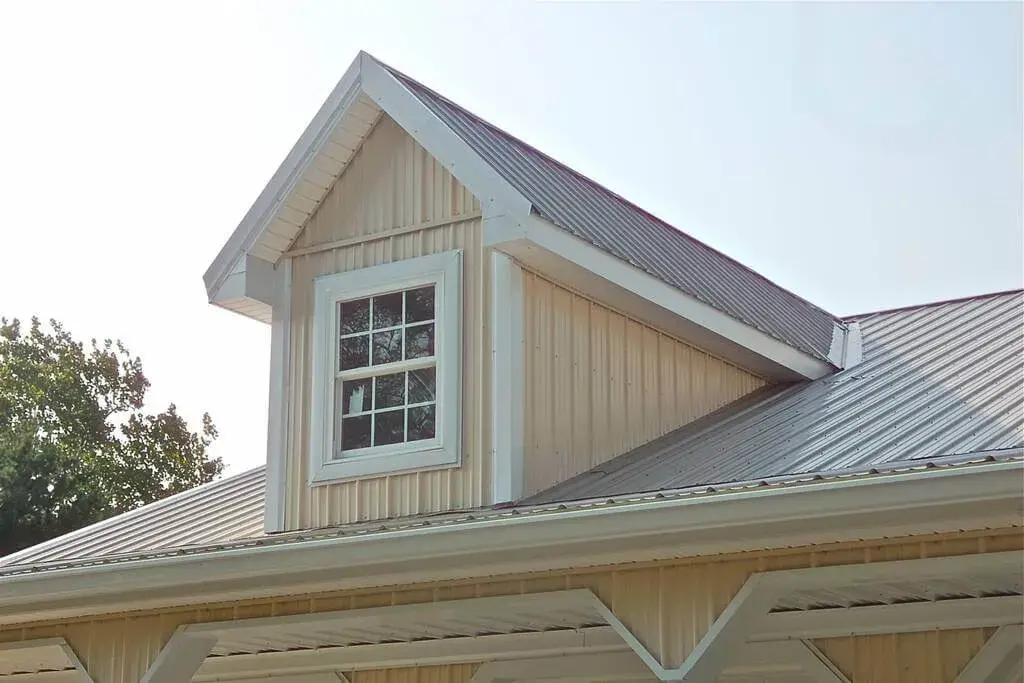Metal roofing has been around for centuries and has been used in construction for its durability and longevity. In recent years, the popularity of metal roofing has increased due to the many benefits it offers. This article will outline the long-term benefits and cost savings of investing in metal roofing. Check out London Eco for more information about getting metal roofing for your home.
Metal roofing refers to roofing materials made from metal, including steel, aluminum, copper, and zinc. Metal roofing is known for its durability, longevity, and resistance to fire and the elements. In addition, it offers a wide range of benefits that make it an attractive option for homeowners and builders alike.
Long-Term Benefits of Metal Roofing

One of the most significant benefits of metal roofing is its durability. Metal roofing is resistant to wind, hail, fire, and other natural elements, making it an ideal choice for areas prone to severe weather conditions. The durability of metal roofing means that it will last for many years, often outlasting traditional roofing materials by decades.
In addition to its durability, metal roofing is also energy-efficient. Metal roofing reflects sunlight, reducing the amount of heat absorbed by the roof and the interior of the home. This can result in lower energy bills and a more comfortable home environment. Metal roofing also helps to reduce the amount of heat transferred into the attic, helping to reduce the amount of energy needed to cool the home in the summer.
Metal roofing is also known for its longevity, often lasting between 50 and 100 years, depending on the type of metal used. This means that homeowners can expect to enjoy the benefits of their metal roof for many years to come without the need for frequent repairs or replacement.
Another benefit of metal roofing is its fire resistance. Metal roofing is non-combustible and does not contribute to the spread of fire, making it an ideal choice for areas prone to wildfires. Metal roofing also offers a higher level of protection against lightning strikes, making it a safer option for homes located in areas with frequent thunderstorms.
Finally, metal roofing is an environmentally sustainable option. Metal roofing is made from recyclable materials, and the manufacturing process is energy-efficient, reducing the amount of energy required to produce the roofing materials. Metal roofing is also long-lasting, reducing the need for frequent replacements and reducing waste in landfills.
Higher Durability with Fewer Maintenance Needs

Steel roofing is more durable in the face of tropical hurricanes, heavy downpours, and high winds. The majority of metal roofing materials are impact-resistant and won’t break. Compared to asphalt shingles and other traditional roofing materials, metal has a far cheaper maintenance cost and seldom has to be patched. However, as is the case with all other roofing materials, we recommend scheduling regular inspections.
Produces a Chilling Effect and Saves Energy

Metal roofing’s energy efficiency is a major selling point for homeowners considering the material. Particularly useful in hotter climates like Southeast Asia and Australia, steel roofing keeps interior temperatures comfortable. By deflecting the sun’s rays, cool roofs may lower a building’s yearly energy consumption by as much as 15 percent (relative to other roofing types) without sacrificing comfort.
Cost Savings

While metal roofing may be more expensive than traditional roofing materials, it offers several cost savings over the long term. The initial cost comparison between metal roofing and traditional roofing materials will vary, depending on the type of metal used and the size of the roof. However, in many cases, the initial investment in metal roofing will be offset by the cost savings over the life of the roof.
Maintenance costs for metal roofing are generally lower than for traditional roofing materials. Metal roofing is resistant to damage from the elements, reducing the need for frequent repairs. The durability of metal roofing also means that it will last for many years, reducing the need for frequent replacements.
In addition to lower maintenance costs, metal roofing can also result in energy savings. Metal roofing reflects sunlight, reducing the amount of heat absorbed by the roof and the interior of the home. This can result in lower energy bills, as the home will require less energy to cool. Metal roofing also helps to reduce the amount of heat transferred into the attic, helping to reduce the amount of energy needed to cool the home in the summer.
Conclusion
Investing in metal roofing offers several long-term benefits and cost savings that make it an attractive option for homeowners and builders. The durability and longevity of metal roofing mean that it will last for many years, often outlasting traditional roofing materials by decades. In addition, metal roofing is energy-efficient, fire-resistant, and environmentally sustainable, making it an ideal choice for homeowners who are looking for a high-quality roofing solution.
The cost savings associated with metal roofing are also significant. While the initial cost comparison between metal roofing and traditional roofing materials will vary, in many cases, the initial investment in metal roofing will be offset by the cost savings over the life of the roof. Metal roofing requires less maintenance and results in lower energy bills, making it a cost-effective option for homeowners.
When choosing metal roofing, it is important to consider the type of metal used, as well as the qualifications and expertise of the contractor. Homeowners should choose a contractor who is licensed and insured and who has a proven track record of providing high-quality roofing services.
In conclusion, metal roofing is a smart investment for homeowners who are looking for a high-quality, long-lasting, and cost-effective roofing solution. With its many benefits and cost savings, metal roofing is an ideal choice for those who want to enjoy the peace of mind that comes with a high-quality roof.
Explore More

